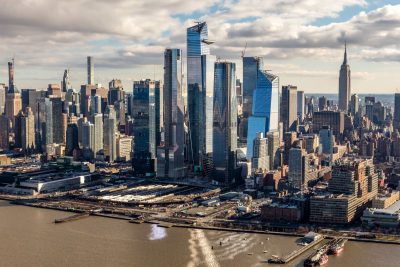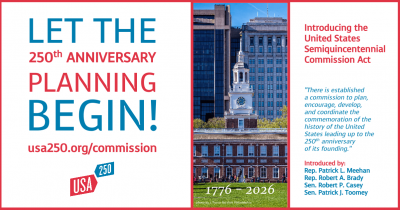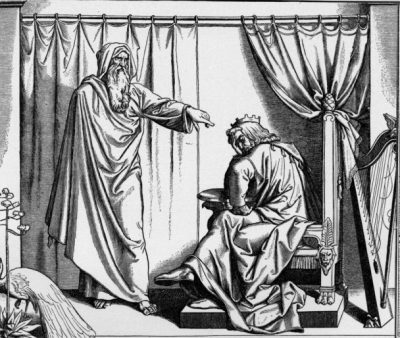
Earlier this spring the Manhattan skyline changed rather dramatically. As the front page of the New York Times put it: “A Gleaming Behemoth Rises, for Better or Worse”(print edition March 15, 2019; online title Hudson Yards Is Manhattan’s Biggest, Newest, Slickest Gated Community. Is This the Neighborhood New York Deserves?). It’s called Hudson Yards. Do you think there will ever be an historical society there? What kind of place is it?
Michael Kimmelman, architecture critic for the paper, was fairly critical of this addition. To the publicity that the Hudson Yards was inspired by ancient Indian stepwells, Kimmelman asserted, it is about as much like them as Skull Mountain at Six Flags Great adventure is like Chichen Itza. Space does not permit a full expression of his criticisms so I will present only some summary comments that go the heart and lack of soul of the complex.
Over all, Hudson Yards epitomizes a skin-deep view of architecture as luxury branding. Each building exists to act as a logo for itself. The assortment suggests so many crowded perfume bottles vying for attention in a department store window display….
It is, at heart, a supersized suburban-style office park, with a shopping mall and a quasi-gated condo community targeted at the 0.1 per cent. A relic of dated 2000s thinking, nearly devoid of urban design, it declines to blend into the city grid….
Hudson Yards glorifies a kind of surface spectacle ⸺as of the peak ambitions of city life were consuming luxury goods and enjoying a smooth, seductive, mindless materialism.
The best feature of the complex is the 1100 feet high observation deck. It will have bleachers next year raising the height of one’s view even more. And that view is spectacular. You can practically see all creation. From there one can gaze upon the most magnificent vistas of New York imaginable…because from there you cannot see the Hudson Yards!
Kimmelman compares Hudson Yards to the beloved Rockefeller Center of Christmas tree fame and the new edifices are found wanting in almost every way imaginable. It’s not a place where Jane Jacobs would live, where organic communities will be nurtured, or where a community historical society will take root.
In the New Yorker, Hudson Yards is the Hotel California of New York, Alexandra Schwartz lambasts “unremitting artificiality” of the place. This supposed “neighborhood of the future” is a high-end corporate park enclave sustained by $6 billion in tax breaks, more than Amazon sought for its failed attempt to locate in Queens. Schwartz even mocks the seeming triumph of urban reimagination as the “embodiment of this narcotic nowhere-ness” the nearby High Line exemplifies: a beautiful highway that has sliced through a living neighborhood, Robert Moses style, leaving luxury buildings in its wake.” Hell’s Kitchen has character, Hudson Yards has superficial slick size.
A subsequent article Hudson Yards: A City Within a City: New York’s newest neighborhood drew inspiration from Battery Park City, but is filled with 21st-century twists by C. J. Hughes in the New York Times, specifically notes this dichotomy using the 20th-century Battery Park City in lower Manhattan also along the Hudson River for comparison.
While Battery Park City may embody the lessons of urbanist Jane Jacobs, who favored short blocks [as in her beloved Greenwich Village], Hudson Yards can feel derived from her opposite, the master builder Robert Moses, whose approach was often big and muscular.
Hudson Yards is located in New York but is it really part of New York? Where does it belong?
Consider the view of Sebastian Modak, a New York Times reporter assigned to visit every place on the “52 Places to Go in 2019” list (New, Strange and Familiar, It’s Still New York, print edition April 7, 2019; I Walked the Length of Manhattan. Here Is What I Found.
My parents live in Dubai and the only way I’ve learned to like that superlative-obsessed, chrome-and- steel glass city is by gravitating toward the polyglot migrant communities that built the city and the scant traces of the pearl-diving beginnings that haven’t been swallowed up by the drive to build, build, build. To me, Hudson Yards is New York City trying to be the Dubai I’ve always avoided….
Getting back to the Hudson River Greenway was a relief, and entering Central Park made me ecstatic.
In another article (It’s Really Two Malls in One, print edition April 11, 2019; At Hudson Yards, One Mall for the Rich, and One for Everyone Else in New York Times, reporter Jon Caramanica takes to task all those people who have been comparing Hudson Yards to Dubai: “That’s a grave insult to Dubai [!]”
Two different lifestyles are being contrasted here. One is high above the river and for the very rich people; the other is at the street level where the real people live. As the superstar cities from Manhattan to San Francisco increasingly cater to the rich, the stratification increases. Sometimes it reaches a point where normal people cannot even afford to live in the city anymore.
In science fiction, the dichotomy takes on extreme forms. H. G. Wells wrote The Time Machine (1895) about time travel to the future but reflective of his present. The future division of beings into Morlocks and Eloi were a projection of the two classes he encountered: the one who struggled with ceaseless physical labor often underground while the other surface-dwelling leisured class was capable of producing nothing. In the Star Trek episode “The Cloud Minders,” once again there two classes of people. The Troglites mine the earth doing the physical labor while the intellectuals reside above it all in Stratos, a luxurious metropolis which literally floats in the sky. New York did extend the subway to reach Hudson Yards, but I cannot help but wonder if that is more for the people who work there then who live there. How did Gene Rodenberry know? In effect, these Hudson Yard residents are part of a global community like Spectre and not a local or national community.
At the same time that Hudson Yards was garnering unfavorable publicity, Hudson Valley was reaping more positive press. The article “An Instant Community in the Catskills” is about how people created an instant community in the Catskills. It’s about a group of people from the city who all bought homes in a tiny Catskill hamlet. According to the reporter, almost everyone in the group said they have richer social lives and deeper bonds as a result of having bought homes in Sullivan County. Critical to that result was having a sense of community in a place where none of them had lived before. In this case, they brought a community with them and then became part of the larger local [native or indigenous] people who lived there.
A similar pattern occurred in Hudson, NY, according to “Is the Hudson Valley Turning Into the Hamptons?” In this example it was a case of Brooklyn moving north to an Amtrak stop on the Hudson. However, the article serves as a cautionary tale about what the Hudson Valley maybe losing if it replicates West Manhattan aka the Hamptons.
As it turns out even the commuting suburb of Westchester where I live has become part of the story. Once upon a time, post-World War II and Korean War veterans and families moved north in great numbers from the city to find a piece of the American Dream. When they did so, they cut their home ownership or rental ties to the city. A new trend is for people to maintain their city residence while acquiring a second home in Westchester or Connecticut. In a “Close Escape from New York,” a broker exults:
There is the assumption that you have to go far away for it to be wild and natural. But we have areas where, thanks to rocky outcroppings, lakes and streams, you swear you are in New Hampshire.
One such person waxed poetic in her love of her new dwelling in Connecticut:
It was the stone walls that got me. You pass over the Saugatuck River, and there is this little house in Wilton where the road turns from two lanes to one, and when I see it, all of the tension from my neck and back falls away. We see woodpeckers; we see hawks; we see deer. But we don’t see people, and we don’t hear them. It’s a true escape. For us it’s a refuge.
Just as Central Park is for the city dwellers in the example cited above.
Another person making the move to Pound Ridge in Westchester shared similar views.
With young kids, it can get harder to travel. So we created our own Shangri-La up here. The benefit of the location is unbeatable.
The reporter observed of a third couple: “They longed to wake up in nature, by the water, for longer than a weekend.
Or as the couple said:
I feel much healthier out here. It feels good just to breathe fresh air.
Perhaps it is James Earl Jones, resident of Pawling in Dutchess County and supporter of the Friends of the Great Swamp in Putnam and Dutchess Counties who said it best:
For it is money they have and peace they lack.
And all these locations have historical societies too. We need to belong in time as well as space.
Hudson Yards is glitzy, glamorous, and soulless. It appeals to the 1% who want to be above it all living lives of conspicuous consumption. Meanwhile, the real people seek a connection with nature and community. Keep these thoughts and observations in mind when seeking to understand the true issues at stake in the culture wars between Columbus Day and Indigenous Peoples’ Day. Tikkun Olam. Repair the World.






